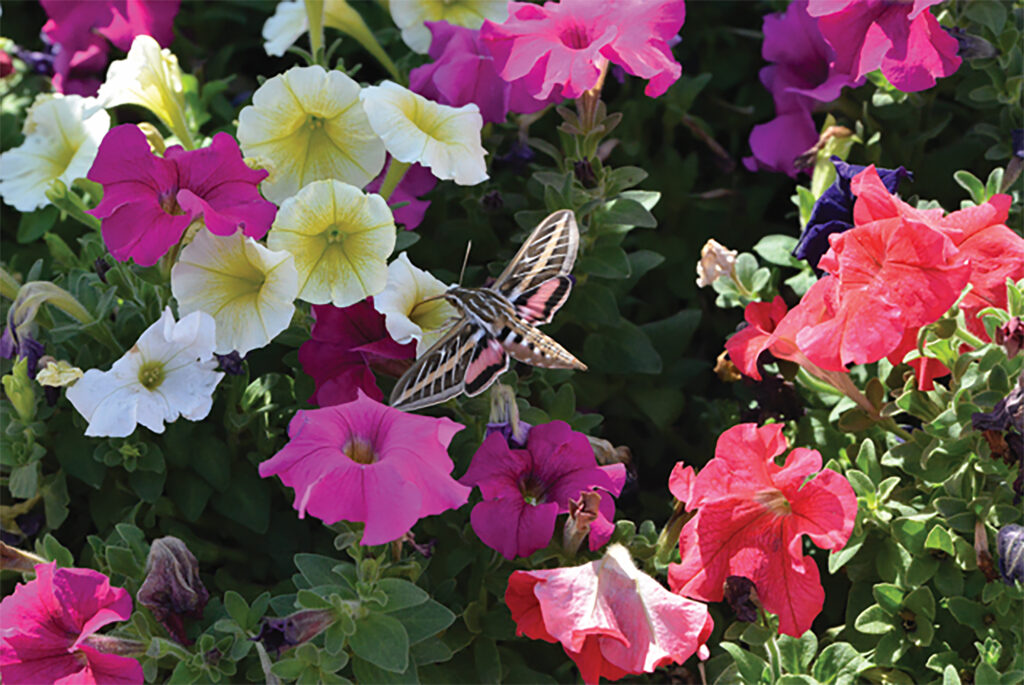
A hummingbird moth pauses in mid-flight in a flower garden south of Huntley on Yellowstone Trail recently. The moths, while not uncommon, are a rare sight locally. (Landen McNiven photo)
Warmer weather in September brought out a rare sightings. Although it’s not uncommon in the Northwest U.S., it is rare to catch an image of one in mid flight with the wings spread while searching for nector in flowers.
This picture was captured Sunday September 11, 2016.
This delightful insect visitor perhaps will visit your flower patch or garden. It’s called the hummingbird moth. Several species of the genus Hemaris deserve this name and for very good reason. They fly and move just like hummingbirds. Like them, they can remain suspended in the air in front of a flower while they unfurl their long tongues and insert them in flowers to sip their nectar. They even emit an audible hum like hummingbirds. Quite often inexperienced garden visitors notice what they think is a tiny hummingbird fleeting among flowers such as bee balm (Monarda). They listen incredulously when one explains to them that what they just saw was not a bird but a moth (As what happened initially in this case).
Hummingbird moths are rather plump; the tip of their tail opens into a fan. They are usually of a rich reddish brown color, at least in part. Like all Lepidoptera their wings are covered by scales; some species lose many of the scales from patches on their wings, so they are called clearwing hummingbird moths. Like most moths they have a very long tongue which they carry rolled under their chins and that they use to reach the nectar of long-necked flowers. Such nectar is inaccessible to many other flower visitors, so it seems that these flowers prefer long tongued pollinators and try to keep the others away.

